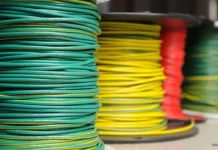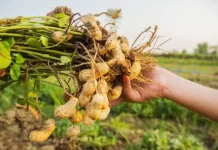Plants are an important part of our planet Earth, as they are the only ones that make it green. Plants come in various types and are the foundation of all life forms on Earth, as all living beings depend on plants for survival. Plants are living things that are found everywhere on our loving planet Earth.
Beautiful green plants are the ones that are the most important parts of our ecosystem, as they create food by absorbing energy from sunlight, water, and soil, and then they provide food to humans, which is essential for the ecosystem. There are various types of plants for kids based on how they grow, what they need, and their reproductive procedures.
Continue reading the article to know more about Types of Plants for Kids and Different Types of Lines For Toddlers.
The most important types of plants for kids to know
So basically, the classification of plants is based on their growth habits and the types of seeds that they possess. For the growth of plants, various factors play a vital role, such as genetic factors, environmental factors, and the surrounding environment. So here is the list: –
- Herbs
They are short-height plants with beautiful green, soft, and delicate stems. Their life cycle is just one or two seasons, and they have very few branches. These plants are so short that they could easily be uprooted from the soil. Herbs contain a lot of nutritional benefits and form part of a healthy, balanced diet.
Example: wheat, paddy, and grass
- Shrubs
Shrubs are medium-height plants that are far shorter than trees, but yes, they do grow larger than herbs. Shrubs are identified by their bushes, woody stems, and branches. While stems are sturdy, they are flexible yet not easily broken. The species of these plants typically determines how long they live. Some of the common shrubs found nearby are henna, tulsi, rose, jasmine, lemon, and jasmine.
Example: lemon, tulsi, and rose.
- Trees
Trees are tall plants that have thick, hard, and woody stems, which are known as the trunk. The trunk of the tree gives rise to many branches, which bear flowers, leaves, and fruits as well. The lifespan of the tree is very long, and it grows to a good extent.
Example: Banyan, mango, and neem
RELATED – Types of lines for kids- Different Types of Lines For Toddlers
- Creepers
Creepers are plants that creep on the ground and have fragile, long, and thin stems. They are ones that cannot stand erect and take all their weight.
Example: pumpkin, watermelon, and strawberry
- Climbers
Climbers are far more advanced than creepers, as they could grow vertically if provided with some external support to carry their weight. These plants have very thin, weak, and long stems, and they make use of tendrils to climb.
Example: green peas, grapevine, and money plant
- Monocotyledon and Dicotyledon
Monocotyledons are plants with a single seed, whereas Dicotyledon plants have two seeds that can be divided into two equal parts.
Example (monocotyledon): rice, bamboo, etc.
Example (dicotyledon): oaks, cashews, etc.
- Flowering plants
Flowering plants are the ones that grow beautiful flowers on themselves and are characterised as angiosperms as they produce seeds in flowers, which continue the process of reproduction further.
- Algae
Algae is a seedless plant that is found in water bodies. They are basically small, microscopic organisms that are consumed by aquatic animals as their food.
What makes a plant kid-friendly 10 types of plants
Gardening is a way to make us feel happy, provide us with mental, physical, and emotional health benefits, and much more. Types of plants for kids are the ones that are safe for them, and you could easily make use of them to teach your child the methods of growing plants. The 10 types of kid-friendly plants are as follows:
- Philodendron Heartleaf is a non-toxic plant that is fast-growing.
- African violet blooms continuously, which makes kids learn about their development.
- Bromeliad pineapple could prove to be an entertaining fruit for your kids.
- The red prayer plant is the one that looks so mesmerizing as its leaves dance when they follow the light.

What is Growth Habit?
Growth habits in horticulture refer to the height, form, and type of growth that a plant experiences as well as its growth and development. Their growth habits are influenced by both hereditary and environmental influences, which are both significant.
For instance, how plants respond to their surroundings is influenced by interactions with other species. According to evolutionary theory, growth habits serve to ensure that plants adapt to their environments and survive, which increases the likelihood that the genes will be successfully passed on to the next generation.
FAQs
What are plants?
A plant is a green living thing we often see around use that has a stem, leaves, and roots. Plants can transform solar energy into food because they are photosynthetic and have the green pigment chlorophyll. Starch is how plants store their nourishment. The majority of plants have roots in one spot, while others have the ability to turn their leaves toward the sun or react to touch.
How many types of plants are there?
Since most plants are planted to the earth, they cannot move around way people and animals can. The most essential requirement for lying organisms to survive is oxygen, which plants provide. There are about 3 lakh plant species on the planet!
What are flowering plants?
Angiosperms, or flowering plants, are a group of plants that produce both flowers and fruits. The phrases “angeion” and “sperma” in the Greek language are the origin of the term “angiosperm,” which describes plants that produce their seeds inside of a fruit.
What are non-flowering plants?
Mosses, ferns, liverworts, hornworts, lycophytes, and other non-flowering plants all reproduce through spores. Conifers or gymnosperms, are non-flowering plants, that generate seeds.
What are some examples of trees?
Some examples of trees include the banyan, mango, neem, cashew, teak, and oak. There are two more plant types that require some help to grow in addition to these three groups.
RELATED – Importance of Learning Spelling
Conclusion
There are various types of plants for kids that are kid-friendly, so if you want to teach your kid about plants, you must keep them at home. Around us, there is a great diversity of flora. There are a select few terrestrial and aquatic plants. The same parts and functions are shared by all of them, despite the fact that they each have distinct roots, stems, leaves, flowers, fruits, and seeds in addition to other distinguishing characteristics. As a result, the classification of plants is primarily dependent on a number of variables, and they can be further divided based on their height, stem softness, branches, and life cycle.
POPULAR SEARCH TERMS
Types of lines for kids, Best Housing For USC, Top Ten Law Colleges in India, Exploring the Possibilities of Accounting Careers, Delving Into the Inner West Property Market, Top 10 NIT colleges in India, What Are the Educational Benefits of Joining the Best Honor Society?.

































